What Are The Blown In Attic Insulation Pros And Cons?
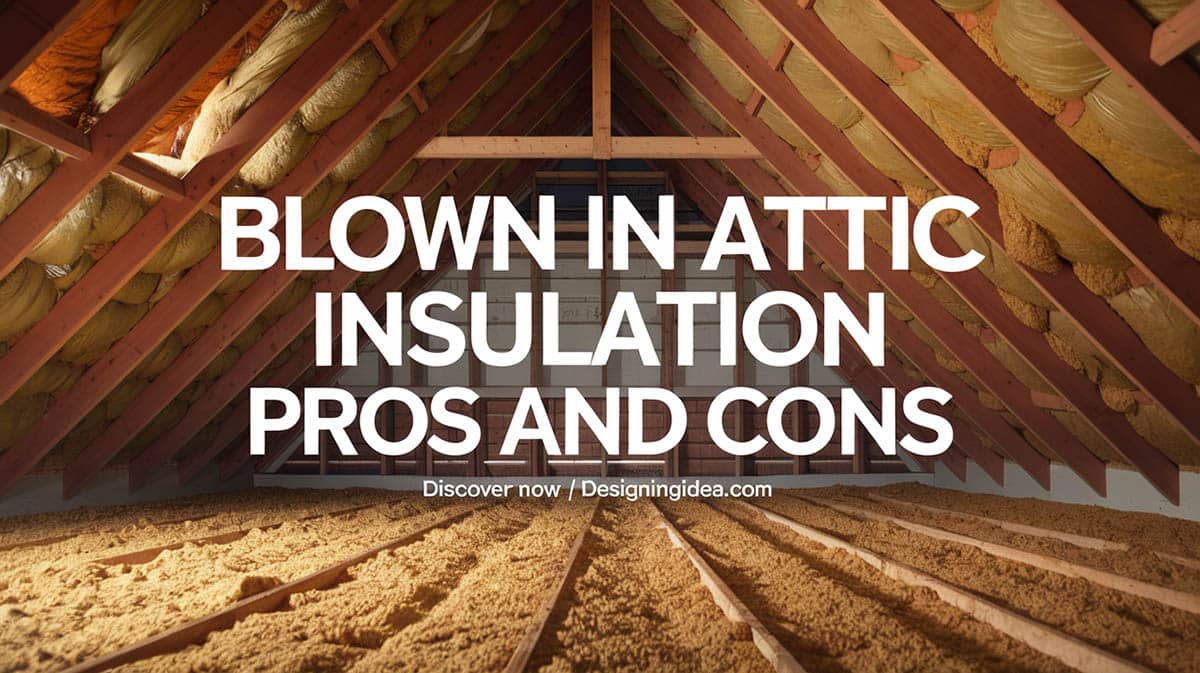
One of the key elements of controlling insulation in the home year in and year out is attic insulation. Heat is something that naturally rises, making the attic the obvious area in the home for it to gather to, making the house hotter or cooler, depending on what kind of season it’s in. One of the most effective ways to insulate the attic is by means of blown-in insulation. In this article, we will explain what blown in attic insulation is all about and what the pros and cons are that come along with it so that as a homeowner can decide on the best way for you to insulate your attic.
Pros
Blown in attic insulation works great because it stops warm air from escaping out of your home during the cold winter months. It also stops heat from entering your home during the hot summer months. However, there are more benefits to consider. We’ve laid them all out for you down below:
• Helps AC/heater reduce workload – It retains the hot air that’s been generated by your heater or radiator during the winter while at the same time, during the hot months, it keeps the heat out, ensuring that your AC or your heater doesn’t work too hard. This helps you save up on a considerable amount of money when your utility bills come in.
• Fire-safe – Materials such as fiberglass and treated cellulose are generally fire-retardant, meaning that your attic will turn out to be more firesafe. [source]
• Easy Installation – If you have a proper blower machine in place, its installation should be pretty quick and simple.
• Sound-dampening qualities – Fiberglass and cellulose materials are soundproof.
• Moisture protection – You get to reduce indoor condensation, protecting your home from moisture and premature rotting.
• Can provide better coverage – It can get into the small nooks and crannies in your attic that other types will not be able to get to. Read more about spray foam insulation here. It can fill in the gaps in between the AC units and heaters that just isn’t possible with basic batt insulation, ensuring that your attic space is well sealed and maximizing the effects of the insulating material.
• Less expensive compared to other types – It is also relatively inexpensive compared to other processes without ever compromising its R-value or the material’s resistance to conductive temperature flow.
• Prevents insects and pests – The material is often times treated with borates. This is effective in preventing insects and other destructive pests from populating and building colonies in your attic.
• Can use on other existing insulating style – You can easily layer blown in insulation on top of any existing insulating material you may have in place in your attic to further bolster its insulating benefits. Not having to take them out would also help you save up on costs.
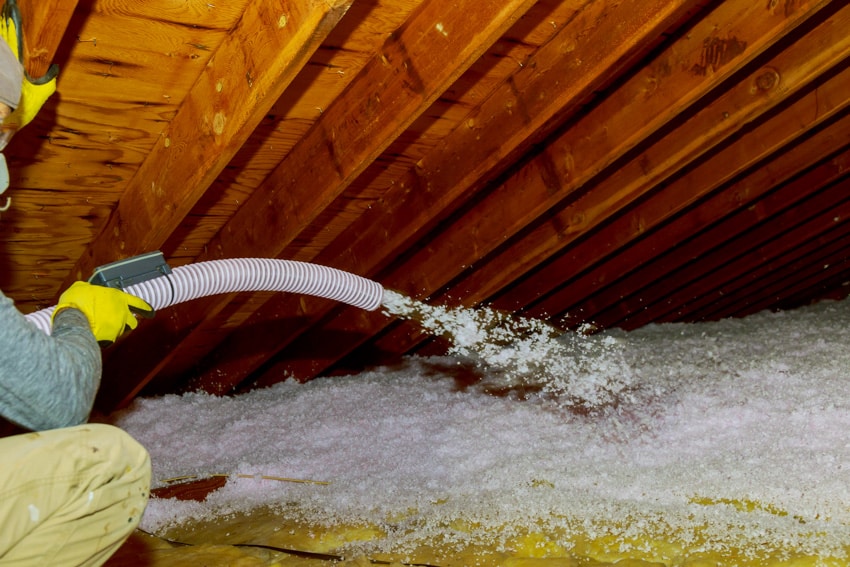
Cons
Although blown in insulation does come with a lot of benefits, it also comes with certain cons or downsides. Before you could make an informed decision of which type would go best for your attic, read on to find out what they are.
• Messy installation – It can be quite messy at times and it is highly discouraged for you to go ahead and do it yourself. The recommendation is that you get an experienced contractor and get the job done professionally instead.
• Very heavy material – This material can at times be a little heavy so if you happen to over-insulate a certain area, you may run the risk of causing the ceilings to crack.
• May need special venting – You need to get soffit venting installed if the need arises or completely air seal the attic space in order for it to work best.
• Extra precautions may be needed to properly insulate over existing insulation – If you happen to blow cellulose over existing fiberglass insulation, there might be a need for you to refit and cut laid batts that don’t really fit well. Plumbing insulation should also be done prior to make sure that the blown in process goes on without a hitch.
• Without proper venting may promote mold – In the event that the attic space hasn’t been properly air sealed, you run the risk of exposing it to moisture which could eventually make it susceptible to mold and rot especially for the areas that are made out of wood.
What Is Blown In Attic Insulation?
In order to understand what blown in attic insulation is all about; you would have to understand what it’s made of. It is basically a combination of fiberglass, cellulose, and other materials thrown into the mix. It has a texture that’s quite similar to that of goose down feathers and it effectively fits right into the tight areas all over the attic such as the ducts, in between the walls, as well as in between the wires.
It can also comprise of other more common materials such as glass, cardboard, a variety of waste materials, or even recycled newspaper. It gets its name from the machine that’s used to blow the insulating material into the different parts of your attic. Basically, the materials are being inserted in the machine, which is then aimed at the different spots that need to be sealed up, and the materials blown out fill those spots.
What Type Of Blown-In Insulation Is Best?
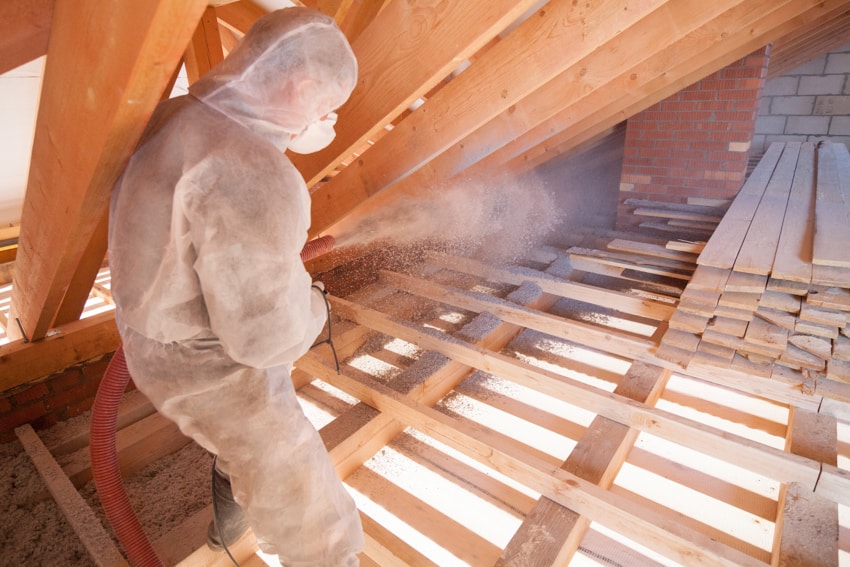
There are technically just two types of materials used for blown in insulation: cellulose and fiberglass. The best type is fiberglass, but we’ll lay out the two types for you nonetheless.
• Fiberglass is the cheaper option and maintains an R-value of 2.2 to 2.9 per inch. Most of it contains up to over 50% of recycled glass so it retains its thickness and doesn’t settle too much after it has been blown in. It is also a fire retardant, making your attic completely fireproof.
• Cellulose is made out of recycled paper. It’s a great option for homeowners who would like to make the environmentally friendly option. It also contains borate, which makes the material both resistant to pests as well as fire. It has an R-value of 3.5 to 3.8. If applied correctly, it will not settle and compress. What this means is that if you initially blew in 12 inches of cellulose insulation, it is bound to retain its thickness for a longer period of time.
Insulation Cost

If you’ve gotten this far into the blown in attic insulation pros and cons, you’re probably quite sold on the benefits already and you’re probably wondering how much it will cost you.
This is a little difficult to quantify as blown in attic insulation depends on a lot of variables such as which state you live in and what R-values are required in your location. Other cost variables include the type of attic, which areas require insulation, how the climate is like in your location, what material you choose and the costs of professional labor in your area.
However, a good estimate would be at a range of $600 to $1,200 for an attic that has an area of 1,000 square feet. It’s also good to note that on average, the R-value required for a home is 30. This equates to roughly around 10 to 14 inches in terms of thickness.
What Is The Life Expectancy Of This Insulation?
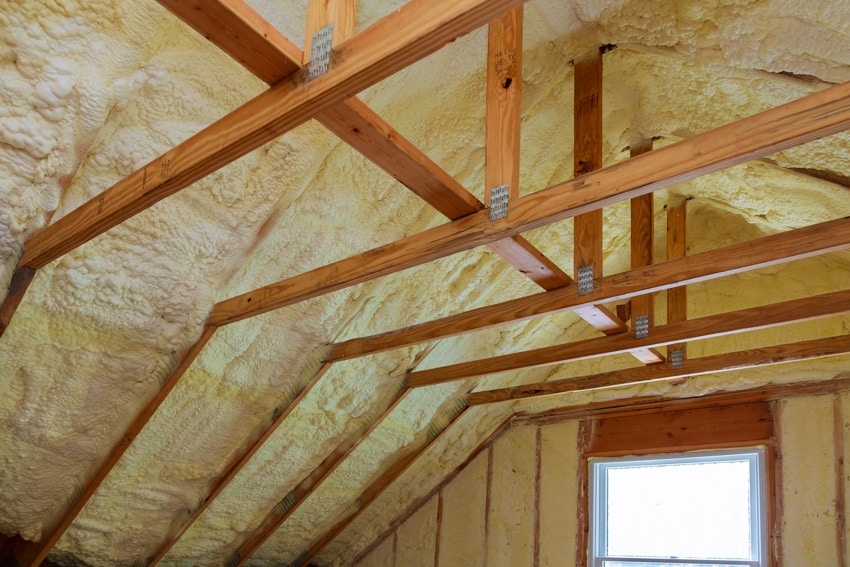
Insulating any area in the home is a pretty big and costly project and it’s only natural for you to ask how long it will last. Fortunately, blown in insulation has a reputation of lasting for quite a long time. It has been estimated that it can last anywhere from 20 to 30 years granted that the conditions are ideal and that the home is maintained decently.
There are a lot of factors that can ultimately affect the lifespan of your blown in attic insulation which is why it is always best to hire a professional to do the job for you.
Removing Blown Insulation From The Attic
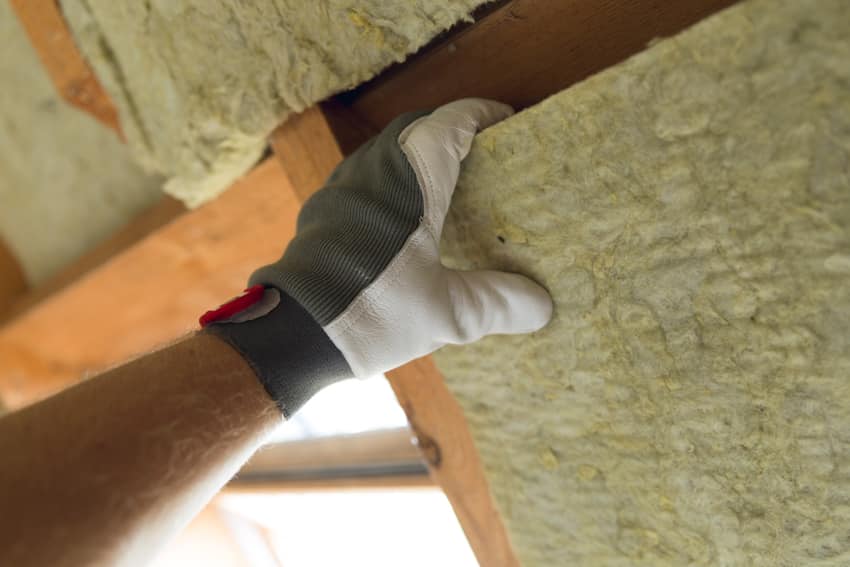
After considering the blown in attic insulation pros and cons, its removal can be a messy and time consuming job. The concerns surrounding this would be molds and rot caused by structural problems and ineffective air sealing, rodent infestation and exposure to contaminants, or even just the insulating material itself being damaged, causing your electricity bills to go up.
The first step that you need to do is to make sure that you clear the area. Make sure that it’s safe to do so first and keep an eye out for asbestos, mold, and rodent droppings or carcasses. If you come across any of the three, it would be best if you don’t do the clearing yourself.
Once the area is safe though, you can proceed with attempting the removal process yourself. Blown in insulation is so much easier to remove compared to a batting type. You’re going to need a HEPA-filter rated vacuum. If you don’t own one, you can definitely rent one out.
Make sure that you have protective gear on such as overalls, gloves, goggles, and also a good mask. Prep with large rolls of plastic sheeting so that you can easily seal the area off and catch any particles that might scatter to the rest of the house.
If you have a small attic and fitting through it isn’t a possibility, you might need to result to more creative measures, such as tying a rope to your vacuum hose so that you can move it around as it sucks the materials out from your attic.
Make sure that you prepare sealable and heavy-duty trash bags that you can empty your vacuum into and make sure that you dispose of them responsibly.
The last thing you’d want to happen is to end up having loose particles floating all around your home. See more related content in our article about basement ceiling pros and cons on this page.






